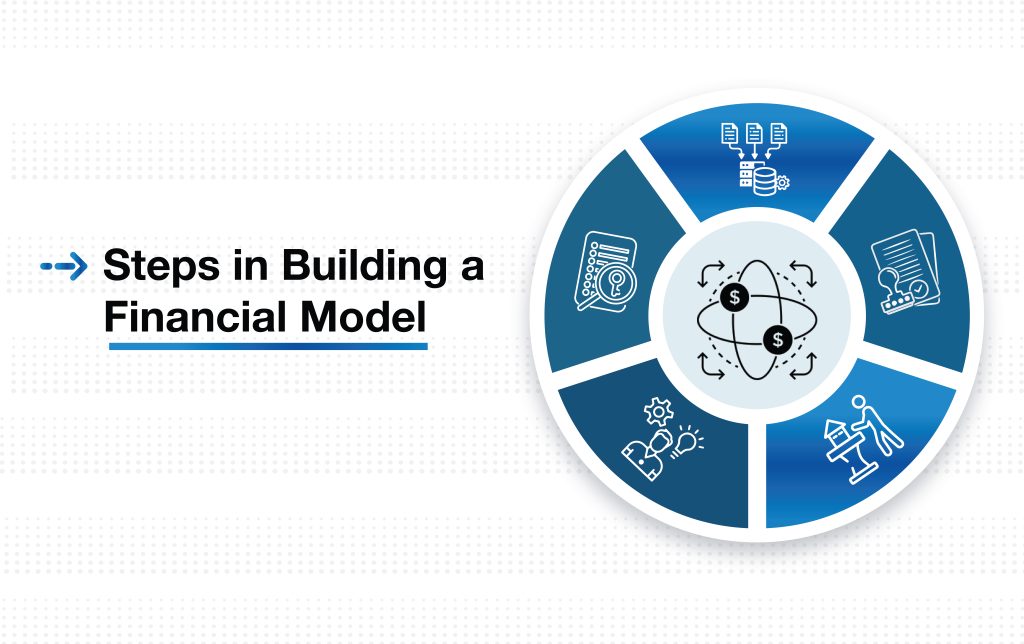Steps in Building a Financial Model
Creating a robust financial model is a critical process for businesses to plan, strategize, and make informed decisions. Below are the key steps involved in building an effective financial model:
1. Data Gathering
The foundation of any financial model is accurate and comprehensive data.
1. Collect historical financial data, including the balance sheet, income statement, and cash flow.
2. Ensure data quality to minimize errors and improve the model’s reliability.
2. Assumptions
Define realistic assumptions to project future performance.
1. Estimate revenue growth, operating costs, capital structure, and macroeconomic factors.
2. Collaborate with stakeholders to ensure assumptions are aligned with business objectives.
3. Building the Model
Organize the data into a structured framework.
1. Set up financial statements using Excel or specialized software.
2. Link inputs, outputs, and assumptions to create a dynamic model that adjusts with changes.
3. Include detailed forecasting for revenues, expenses, and cash flow.
4. Scenario Analysis
Assess various possibilities to prepare for different financial outcomes.
1. Create “What-If” scenarios to evaluate the impact of market changes, new investments, or unforeseen risks.
2. Test assumptions under different conditions to guide decision-making.
5. Sensitivity Analysis
Understand how changes in key variables affect the overall financial performance.
1. Analyze the sensitivity of the model to fluctuations in revenue, costs, interest rates, or other factors.
2. Use these insights to identify vulnerabilities and improve financial planning.
Why Financial Modeling Matters
Financial modeling provides critical insights into a company’s performance, potential risks, and opportunities. Whether you’re preparing for investment decisions, mergers, acquisitions, or strategic planning, a well-built model helps businesses:
1. Forecast financial performance.
2. Evaluate investment opportunities.
3. Optimize resource allocation.

